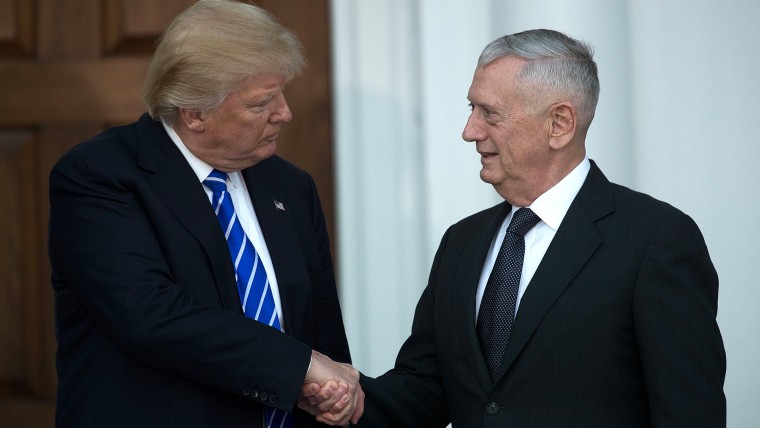Three weeks ago tomorrow, Donald Trump surprised a lot of people by announcing a new policy via Twitter: "Please be advised that the United States Government will not accept or allow Transgender individuals to serve in any capacity in the U.S. Military."
Almost immediately, it became obvious that the president had tweets, but no policy. The White House struggled to defend the discriminatory ban; service chiefs dismissed it; and the Joint Chiefs effectively ignored it, leaving the status quo in place.
Yesterday, as the Washington Post reported, Defense Secretary Jim Mattis left open the possibility that at least some transgender service members could continue their military careers, despite what Trump said on Twitter.
Mattis, speaking to reporters at the Pentagon, said that he and his staff are still studying the issue, including how having transgender service members affects other members of their units.The Pentagon chief, asked whether transgender people now in the military will be forced out of their service, pointed to a statement that Gen. Joseph F. Dunford Jr., the chairman of the Joint Chiefs of Staff, issued a day after Trump's announcement last month. Dunford said that openly transgender people will be allowed to continue to serve until there is guidance from the president on how to proceed.
The oddity of the circumstances is hard to miss. The Commander in Chief publicly declared that the United States military "will not accept or allow transgender individuals to serve in any capacity." No one knew exactly what that meant, so everyone simply put the declaration aside.
Three weeks later, there's still no clarity as to what Trump was talking about, so his ban is in limbo: it exists on Twitter and in the president's mind, but in practice, according to Mattis, the Pentagon has decided to "study" the issue.
In Grown-Up Land, officials tend to examine an idea before a president starts banning Americans in uniform from military service, but in the Trump administration, the order of events is apparently reversed.
For his part, the president told reporters last week, in reference to his ban, "It's been a very difficult situation. And I think I'm doing a lot of people a favor by coming out and just saying it."
We still don't know what "it" he was referring to.
